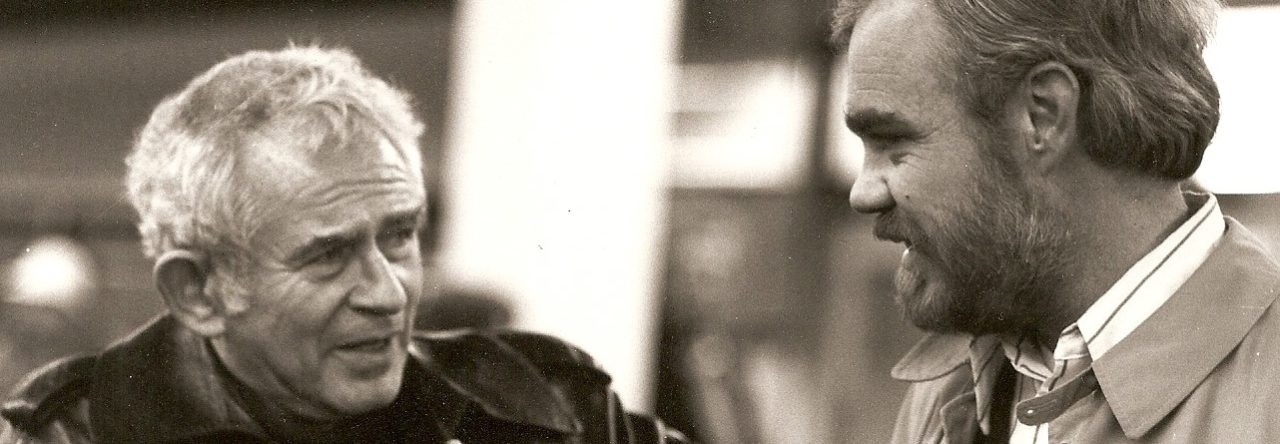Norman Mailer was known for his toughness and temper, and his letters have plenty of that, but they also show his kindness and generosity with other writers.
Tag: review Page 3 of 8
Norman Mailer entered Harvard in the fall of 1939, just as World War II began. His famous novel about part of that war, The Naked and the Dead, was published in 1948, and at age 25, like Lord Byron, he awoke to find himself famous. Sixty years later, looking back on the book’s immense success—it topped the New York Times Book Review’s bestseller list for 11 consecutive weeks and remained on that list for 62 more—he commented on the experience of sudden fame: “I knew I’d be a celebrity when I came back to America [he and his wife were living in Paris] and I felt very funny towards it, totally unprepared. . . . I’ve always seen myself as an observer. And now I knew, realized, that I was going to be an actor on the American stage, so to speak.”
Lennon captures Mailer’s enormous drive to master his craft, to experiment with form and genre, to build a reputation, and to contend with the large issues of his country and culture for six decades. This biography is not only indispensable for students of Mailer, but also for anyone interested in taking the pulse of the United States through those decades. More and more, Mailer put himself on the stages of literary and political history, shaping both through his participation and shaping our collective memory through his influential, if sometimes abrasive, representations.
After he finished reading an earlier biography of himself, Norman Mailer told me, with a mixture of rue and triumph, “He missed the twinkle.” His new biographer, J. Michael Lennon, does not miss the twinkle or much else about the writer who swaggered across a half century of American life, writing novels, plays, poems, essays, journalism, even some theological speculation along with directing movies. Near the end Mailer stood, propped on two canes like a wounded mercenary who had fought behind the lines all his life, a writer/celebrity as drained by the daring and scope of his ambition to find the Northwest Passage to the origins of American mores as Theodore Roosevelt was when, scarred and fevered, he emerged from his post-presidential search for the source of the Amazon.
A long-time friend etches the extraordinary and exhaustive life of the lion of American letters. Review by Shougat Dasgupta.
Biographer Lennon knew Mailer intimately as his friend, archivist, editor of his letters (still in progress) and partner in “On God,” a series of interviews about religion. Mailer had invited Lennon to be his biographer, and this richly detailed, revealing and very frank volume is the happy result. Its heft alone would please Mailer, who produced numerous shelf-benders.
While reading the first chapter of “Norman Mailer, A Double Life,” the exhaustive (and exhausting) new biography of the great man by J. Michael Lennon, I discovered that during his formative years, from the age of nine through his admittance to Harvard at 16, Mailer lived in an apartment in Crown Heights, Brooklyn, seven blocks from where I reside now
In the Prologue to Norman Mailer: A Double Life, biographer J. Michael Lennon writes that “Mailer’s desire for fame, and his distaste for it, never abated over his long career. Nor did his ability to determine how he might write about his current situation, whatever it might be. It became a reflex.”
Lennon avoids flourishes of style and presents the facts cleanly, modulating with ease between explication of facts, letters, quotes from texts by Mailer and others, and occasional personal input (he was a close friend of Mailer’s for over two decades). The prose is breezy and fluid, even when Lennon incorporates critical literature and other secondary materials, allowing his subject to emerge unhindered. In addition to its readability, the book is also an excellent academic resource with over 100 pages of endnotes—a treasure for literary scholars. Not only is Norman Mailer: A Double Life enlightening, lively, and a pleasure to read, it is almost certain to become the standard Mailer biography.
